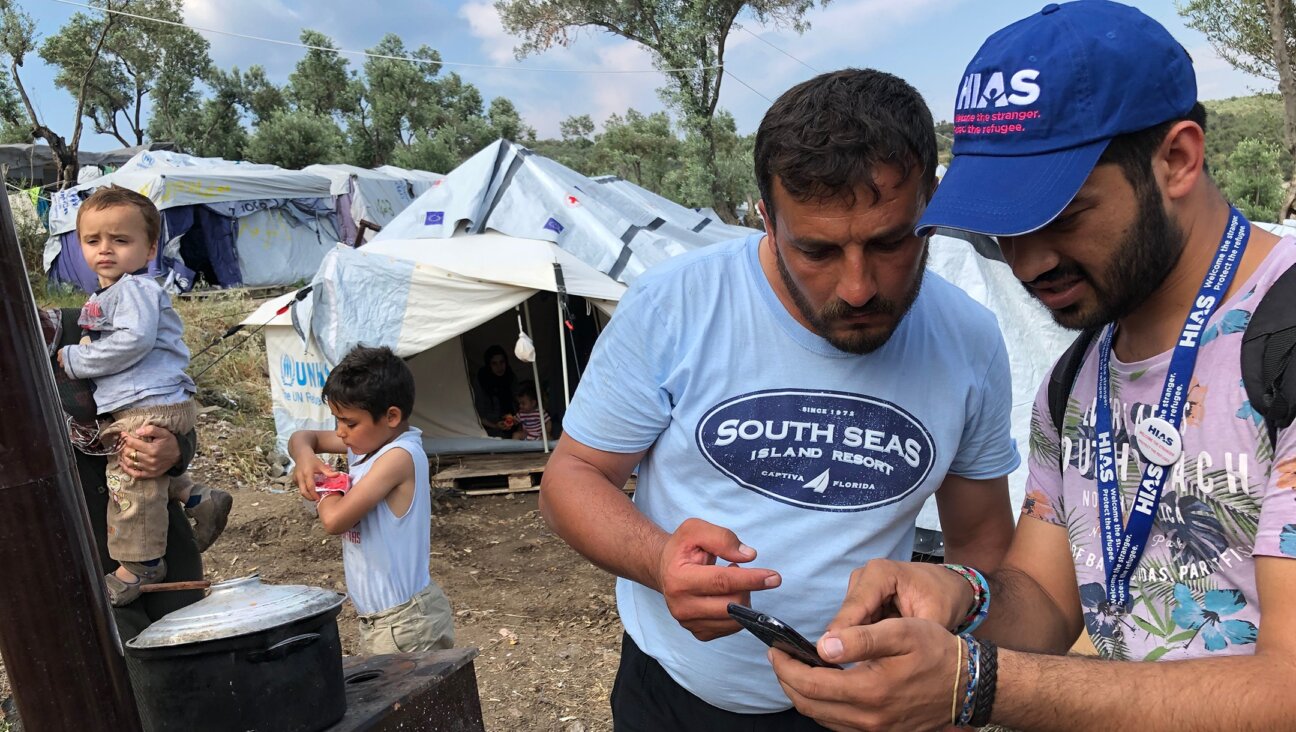Repackaging the Old World as a Tourist Attraction
Imagine if you could cross a bridge and enter the world of our fathers. Literally.
Imagine visiting a real-life shtetl, complete with a market, private homes, and a castle, as well as a cafe and a pharmacy. Imagine a place where children could play the games of their great-great-great-grandfathers and where adults might pray at the Olkenik synagogue, a wooden structure whose beauty was praised by Napoleon himself.
Visiting a shtetl may sound like a fantasy to some — and to others, perhaps, a nightmare. But for the noted Holocaust historian Yaffa Eliach, it is a dream about to come true.
Earlier this week in Rishon Lezion, near Tel Aviv, construction began on the world’s first open-air shtetl theme park. Spearheaded by Eliach and her organization, the Shtetl Foundation, Sunday’s groundbreaking ceremony — attended by Israel’s president, Moshe Katsav, and the former chief rabbi, Yisrael Meir Lau — marks the transition of Eliach’s shtetl from concept to reality.
“It’s going to be a Jewish Williamsburg,” Eliach said, referring to the historic restoration in Virginia, not the neighborhood in Brooklyn. “Every country in the world has restored their glorious past. But we Jews don’t have that. I wanted to build a town.”
Eliach, 66, is nothing if not passionate about the theme park. Recently retired from Brooklyn College, where she taught Holocaust studies for three decades, she is infected with a palpable excitement when she discusses her new project. Her hair piled high atop her head in her trademark fashion, speaking to the Forward in her black-walled, black-carpeted East Side apartment — which doubles as the Shtetl Foundation office — she is vivacious and talkative, sharing photographs from a lifetime of Holocaust scholarship and activism.
Eliach had just returned from Israel on an overnight flight barely four hours earlier. Was she the least bit tired? No. “I sleep like a shtetl woman,” she quipped. “They slept very little. No one I’ve interviewed remembers their mother or grandmother sleeping — they were always working.”
Eliach is using her own hometown of Eishyshok, Lithuania, as the shtetl’s model, but she plans to incorporate elements from shtetls across Europe as well as examples of how Sephardic communities lived. “I want to represent all the Jews,” she said. She envisions klezmer concerts, restaurants and Old World-style wedding celebrations — with modern-day prices, of course.
Raising the $100 million the project requires is not easy, Eliach admits. The 124-acre site in Rishon Lezion was a gift from the state of Israel; Israel’s lotto foundation has promised her 10 million shekels, just over $2 million by today’s rates. The architect, Samuel Raveh, is currently working for free. And, according to Eliach, she is donating “every penny” of her income from lectures and from sales of her acclaimed book, “There Once Was a World: A 900-Year Chronicle of the Shtetl of Eishyshok” (Little, Brown & Co.).
“We’re convinced, once we start building, we’ll find contributions from those who see it’s a reality,” she said.
Still, some have raised eyebrows at Eliach’s plans for a cleaned-up recreation of the Old World, a place that, while certainly filled with humane moments, was also plagued with poverty, hate and fear. Can a Disneyfied shtetl accurately portray the complex realities of that vanished world?
“It’s not politics, it’s history,” said Eliach.
“For me, now, rebuilding the past is extremely important,” she continued. “If some people are critical about it, I don’t care. I never yield to the negative. I’m a great believer in life.”
Eliach spins a remarkable, dizzying tale of surviving the Holocaust as a child, describing righteous gentiles, partisans, the murders of her mother and baby brothers and a Nazi’s gun that was just one bullet short. In 1946, she immigrated to Israel, posing as her uncle’s daughter, and in 1953, she married her high school principal, David Eliach. The following year, the couple immigrated to Brooklyn. They have two children — son Yotav is a rabbi and principal at the Rambam High School in Lawrence, N.Y., and daughter Smadar Rosensweig is a professor of Jewish history at Touro College — and 14 grandchildren, ages 2 through 20. “Hitler lost and we won,” she said, “because we are rebuilding Jewish life.”
After acquiring a Ph.D. in Russian history from City College of New York, Eliach began teaching at Brooklyn College in 1969. She quickly emerged as a pioneer in the then unusual but now standard field of Holocaust studies. Ever the activist, she found that as a student of European history, “I couldn’t understand how the Holocaust was never mentioned. I decided that people must learn about it, to prevent it from ever happening again.”
In 1974, Eliach branched out and opened the nation’s first Center for Holocaust Studies, an archive of photos, books, oral histories and more. It merged in 1991 with New York’s newly opened Museum of Jewish Heritage. Eliach, meanwhile, continued teaching at Brooklyn College, retiring just last January. She continues lecturing at colleges across the country, in addition to her work with the Shtetl Foundation.
Eliach’s goal of focusing Holocaust scholarship on Jewish lives, rather than Jewish deaths, culminated in a return trip to Eishyshok in 1987. A woman who had helped save her during the Holocaust took her to the Jewish mass grave. “All the Jews in the town were buried there, but I didn’t feel like I was standing on a grave,” she recalled. “They were talking to me. They were saying, show the world that we are normal people!”
From that experience came the inspiration to create the “Tower of Life” exhibit at the United States Holocaust Memorial Museum, a three-story collection of photographs of everyday life in Eishyshok prior to the Nazi era.
“The common reaction to it, ” Eliach said, “is, ‘We never realized Jewish people were normal people, just like us.’ People identify with them. They weren’t just victims, ugly and horrible — they participate in normal life.”
And participation in “normal” life is what Eliach’s recreated shtetl is all about. She recalls how, before her father was imprisoned by the Red Army, he instructed her to remember what had transpired — but never to forget that the meaning of Judaism is to “choose life.”
The shtetl, said Eliach, “represents the greatness of Jewish life.”
A message from our CEO & publisher Rachel Fishman Feddersen

I hope you appreciated this article. Before you go, I’d like to ask you to please support the Forward’s award-winning, nonprofit journalism during this critical time.
At a time when other newsrooms are closing or cutting back, the Forward has removed its paywall and invested additional resources to report on the ground from Israel and around the U.S. on the impact of the war, rising antisemitism and polarized discourse.
Readers like you make it all possible. Support our work by becoming a Forward Member and connect with our journalism and your community.
— Rachel Fishman Feddersen, Publisher and CEO






















